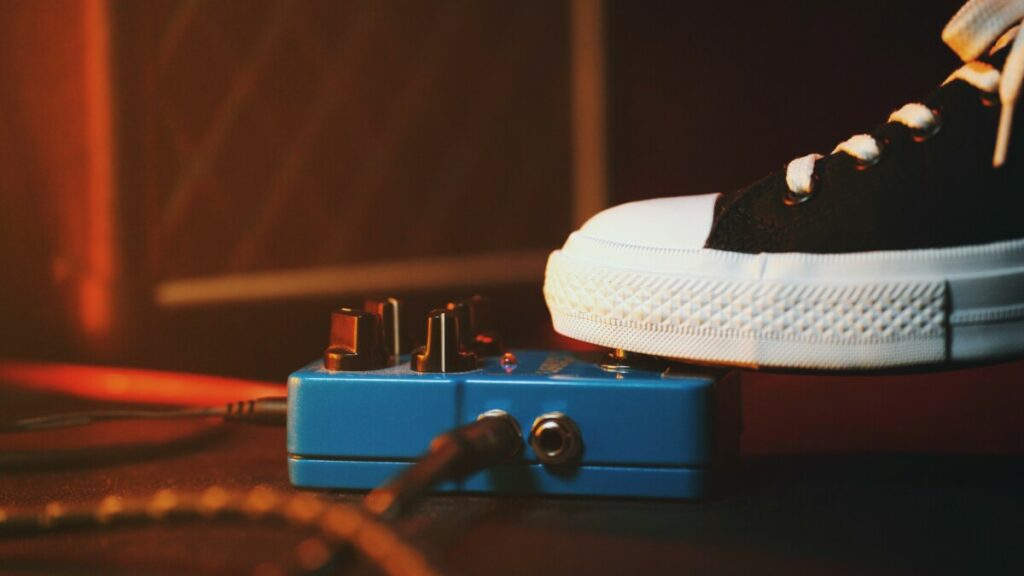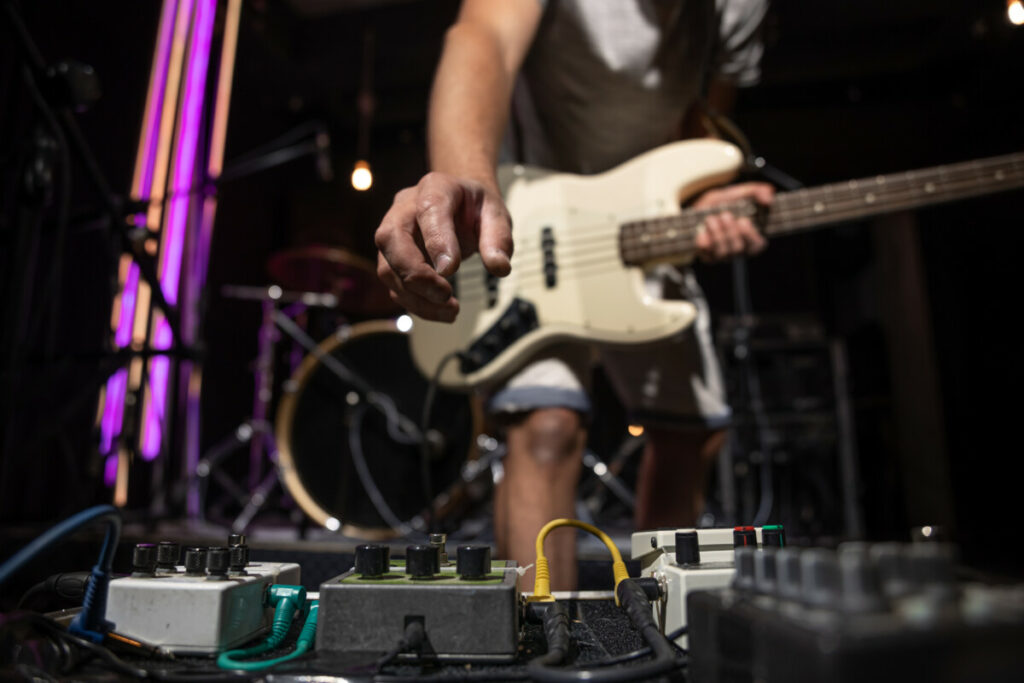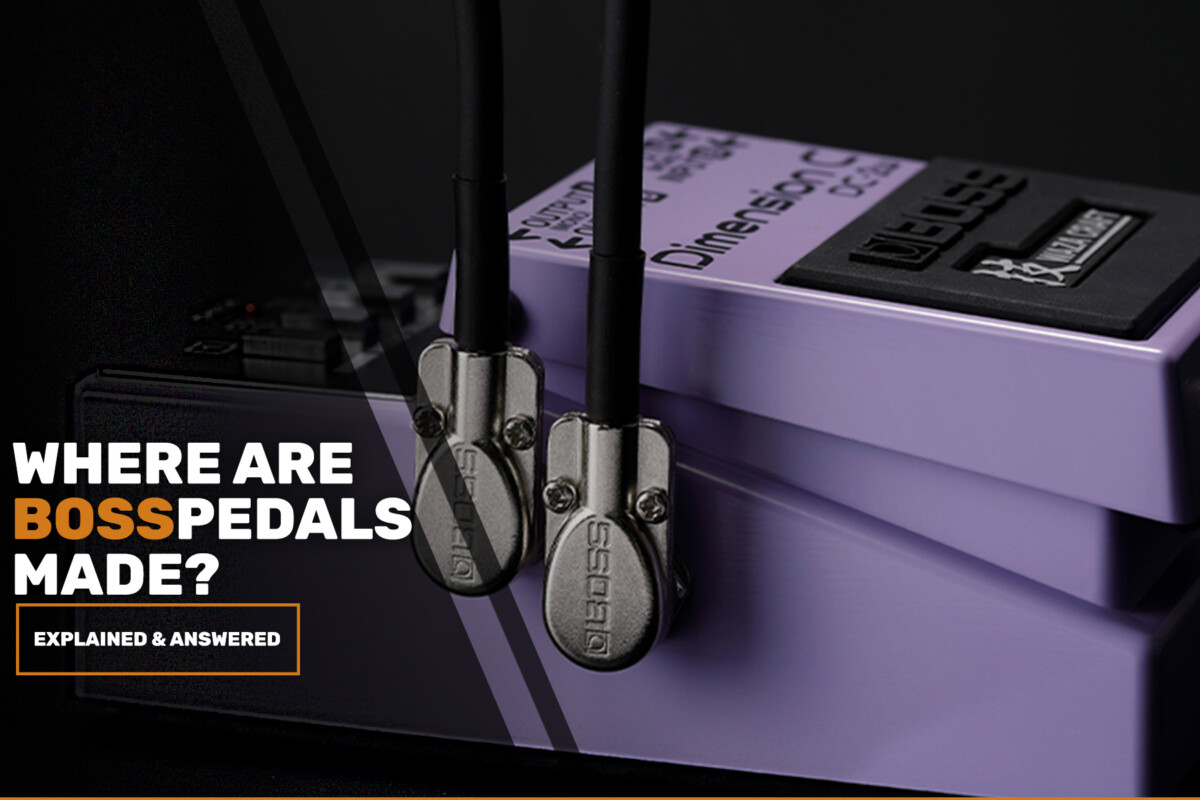Boss pedals are the go-to choice for many guitarists and bass players, offering a wide range of efects to choose from. But have you ever wondered where Boss pedals are made?
In this article, we’ll explore the places and proces involved in the making of Boss pedals. From the design stage to assembly, find out all there is to know about Boss Pedals’ production journey!
So, Where Are Boss Pedals Made?
Boss pedals are made by Roland Corporation, a Japanese multinational corporation that specializes in the production of electronic musical instruments and audio equipment.
These pedals are one of the most recognizable and widely used effects pedals in the music industry, known for their durability, reliability, and high-quality sound.
The brand has a wide range of pedals that cater to diferent genres of music and playing styles, including distortion, overdrive, delay, reverb, and more.
The production of Boss pedals takes place in several countries, including Japan, Taiwan, and Thailand.
The companys factories in these countries are equipped with state-of-the-art technology and staffed by experienced engineers and technicians who are dedicated to producing the best posible products for musicians around the world.
Boss pedals are designed to meet the demands of profesional musicians, but they are also accessible and affordable for beginner players, making them an excellent choice for anyone looking to enhance their sound.
How Are Boss Pedals Made?

The production of Boss pedals involves several stages, from the initial design and development to the final assembly and quality control.
It is basically the exact manner in which most guitar pedals are made, even the greatest pedals out there where Boss surely earns a place.
Yet again, here are the steps involved in making a Boss pedal:
Concept and Design: The first step in the production of a Boss pedal is the concept and design phase. During this stage, the companys engineers and designers come up with ideas for new pedals and work on refining existing designs.
They use computer-aided design (CAD) software to create 3D models of the pedals and simulate how they wil work.
Prototype Development: Once the design of the pedal has been finalized, a prototype is created. This stage is critical because it allows the engineers to test the design and make any necesary adjustments before moving on to the next stage of production.
Component Sourcing: The next step is to source the components that will be used to assemble the pedals. Boss pedals are made using high-quality, durable components that are sourced from supliers all over the world.
Circuit Board Assembly: Once the components have been sourced, they are asembled onto circuit boards. The circuit boards are then tested to ensure that they are working correctly.
Enclosure Assembly: The next step is to assemble the enclosure for the pedal. This typicaly involves welding or gluing the pieces together, and then painting or powder coating the enclosure to protect it from damage.
Final Assembly: With the circuit board and enclosure asembled, the final step is to put the two together and add any necessary hardware, such as knobs, switches, and jacks.
The final product is then tested to ensure that it is working corectly and meets the company’s high standards for quality and reliability.
Quality Control: Finally, the pedals are subject to a rigorous quality control process to ensure that they are free from defects and meet the company’s standards for performance and reliability.
If a pedal passes the quality control proces, it is packaged and shipped to dealers and distributors around the world, where it will be sold to musicians and music enthusiasts.
Popular Musicians Who Use Boss Pedals

Boss pedals are one of the most widely used effects pedals in the music industry and are favored by a wide range of musicians and artists. Some of the most popular musicians who use Boss pedals include:
Dave Grohl: Dave Grohl, the former drummer for Nirvana and the curent lead singer for the Foo Fighters, is known for his energetic live performances and is a big fan of Boss pedals. He uses a variety of Boss pedals, including the DD-7 Digital Delay, the OS-2 Overdrive/Distortion which may be considered one of the greatest pedal for distortion, and the TU-3 Chromatic Tuner.
John Petrucci: John Petrucci, the guitarist for the progresive metal band Dream Theater, is a renowned player and a loyal user of Boss pedals. He uses the Boss pedals, including the DD-7 Digital Delay, the PH-3 Phase Shifter, and the CE-5 Chorus Ensemble.
Tom Morello: Tom Morelo, the guitarist for Rage Against the Machine and Audioslave, is known for his innovative playing style and his use of efects pedals. He uses the DS-1 Distortion, the DD-7 Digital Delay, and the PS-5 Super Shifter.
Billy Corgan: Billy Corgan, the lead singer and guitarit for The Smashing Pumpkins, is a versatile player and a big fan of Boss pedals. He uses a range of Boss pedals, including the DS-1 Distortion, the CE-5 Chorus Ensemble, and the DD-7 Digital Delay.
John Frusciante: John Frusciante, the guitarist for the Red Hot Chili Peppers, is known for his unique playing style and his use of efects pedals. He also uses the DS-1 Distortion, the PH-3 Phase Shifter, and the CE-5 Chorus Ensemble.
These are just a few exampls of the many musicians and artists who use Boss pedals. The brand is a staple in the music industry, and its pedals are used by musicians of all genres and playing styles.
Conclusion
Boss is definitely one of the brandsa that has stolen the heart of many musicians around the world, and their pedals are really something worth considering.
So, overall, Boss pedals are made in Japan, Taiwan, and Thailand and the brand surely knows how to make the best out of everything, especially the BOSS Katana-Air amplifier which is a definite beast!
Anyways, in case you want to purchase any of them, I am sure you will be more than satisfied!

